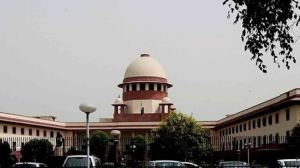Bhagabat Pur Crocodile Project still on despite lack of funds
CALCUTTA, JAN 22: The 13 big breeder reptiles in Bhagabat Pur Crocodile Project still breed despite the Union Government's decision to wi...

CALCUTTA, JAN 22: The 13 big breeder reptiles in Bhagabat Pur Crocodile Project still breed despite the Union Government’s decision to wind it up quite a few years back. And this year, the local forest officials, who are still keeping the show on, claimed to have hatched 60 young reptiles.’
The project was initiated in 1976 in South 24-Parganas by the Union Forest Ministry to revive the big crocodile (the saline water crocodiles) population in Sunderbans from the edges of extinction. However, everything became uncertain after the Union Forest Department stopped funding the project.’
The local forest officials, who feel that the project should continue and is surviving with a meagre Rs 40,000 to 50,000 per annum from the State Forest Department for the last few years, fear that “the winding of the project would rob the Sunderbans of one of the prime attractions for the tourists.”
According to the local forest officials, the Union Forest Ministry felt that since 1976 enough crocodiles have beenreleased in the rivers. “They feel this had helped the crocodile population in the area survive the threat of extinction and the present population is strong enough to carry on with the natural breeding for another 50 years,” a local official said. “Hence no need to continue with the project.” And all funding was stopped since 1992.
The Bhagabat Pur Crocodile Project has, besides the 60 newcomers this year, about 49 young crocodiles in the one to three year age group. The project officials release the reptiles in the rivers after they attain the age of three.
The forest officials buy fish sidlings, small crabs and big fishes from the local fishermen to feed the big and young crocodiles. The project incur a yearly expenditure of about Rs 40,000 to 50,000 after food and maintenance.
“We are trying to explore other avenues” a local forest department official told The Indian Express on the condition of anonymity. “We would like to develop the entire project covering an area of 32 hectares ofland, into a full-fledged tourist spot, so that it can be funded locally,” he said.
But much would depend “how we go about it and more importantly how the Central and State Forest Departments respond to our efforts,” he admits.





- 01
- 02
- 03
- 04
- 05


























